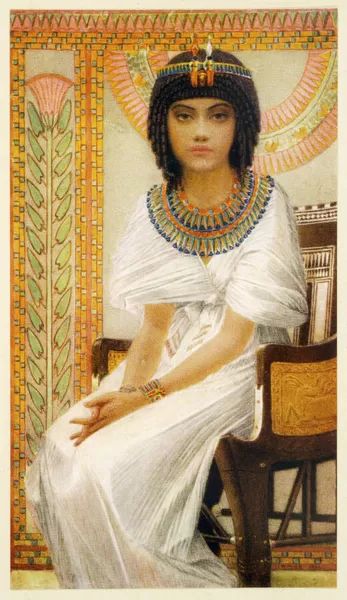Ankhesenamun, a name that resonates through the annals of history, holds a unique and compelling place in the story of ancient Egypt. As the third daughter of the legendary Queen Nefertiti and Pharaoh Akhenaten, she was born into an era of religious revolution and political transformation. Her life, though shrouded in mystery, offers a glimpse into the grandeur and complexities of ancient Egyptian royal life.
A Royal Lineage and a Powerful Union
Ankhesenamun’s lineage alone ensured her significance in Egyptian history. Her parents, Nefertiti and Akhenaten, were central figures in the Atenist revolution, which sought to replace the traditional Egyptian pantheon with the singular worship of Aten, the sun disk. Born during this tumultuous period, Ankhesenamun grew up witnessing radical cultural and religious shifts.

Her importance was further cemented when she became the Great Royal Wife of Tutankhamun, the boy king who ascended the throne after the death of Akhenaten. Their marriage was not just a union of two royals but a symbolic bridge between the Atenist experiment of her parents and the restoration of Amun’s worship, which defined Tutankhamun’s reign. Together, they represented an era of reconciliation and revival in Egypt’s religious and cultural identity.
The Meaning Behind Her Name
The name Ankhesenamun, translating to “She Lives Through Amun,” encapsulates her role as a figure of transition. It signifies the return to the worship of Amun, the god who had long been central to Egyptian theology. Her name reflects not only her religious significance but also her identity as a survivor of Egypt’s political and spiritual upheavals.
A Life Veiled in Mystery
Despite her prominence, much of Ankhesenamun’s life remains enigmatic. Historical evidence suggests that she may have been married to her father, Akhenaten, before her union with Tutankhamun—a practice intended to preserve the divine bloodline. However, her life took a precarious turn following Tutankhamun’s untimely death around the age of 18.

One of the most intriguing pieces of evidence about Ankhesenamun’s later years is a letter attributed to her, sent to the Hittite king Suppiluliuma I. In this correspondence, she reportedly requested a Hittite prince to marry her, claiming she had no sons and feared for her safety. This plea highlights the uncertainty and vulnerability she faced in a male-dominated society, as well as the broader geopolitical challenges of the time.
The Mystery of Her Final Days
What became of Ankhesenamun after Tutankhamun’s death remains one of the enduring mysteries of ancient Egyptian history. Some scholars speculate that she was compelled to marry Ay, the aging advisor who succeeded Tutankhamun as pharaoh. Others believe she may have fallen victim to palace intrigue, potentially meeting an untimely end.
Efforts to locate Ankhesenamun’s tomb have so far been inconclusive, adding another layer of mystery to her story. The absence of definitive archaeological evidence about her final resting place fuels speculation and keeps her legacy alive in the imagination of historians and enthusiasts alike.
A Legacy That Endures
Ankhesenamun’s life was one of resilience and adaptability, marked by her ability to navigate the turbulent political and religious landscapes of her time. Her connections to Nefertiti, Akhenaten, and Tutankhamun link her to some of the most pivotal moments in ancient Egyptian history.
For modern audiences, Ankhesenamun stands as a testament to the power and influence of royal women in ancient Egypt. Her story reminds us of the intricate web of relationships, beliefs, and events that shaped the world’s first great civilization.
The Eternal Beauty of Egypt’s Queens
Ankhesenamun’s name, meaning, and legacy continue to captivate those who study Egypt’s past. As a queen who lived through profound transformation, her story is one of both triumph and tragedy—a symbol of the timeless beauty, power, and complexity of ancient Egyptian royal life.
Her life, though veiled in the sands of time, remains a cornerstone of Egypt’s historical narrative, inspiring scholars and dreamers to uncover the truths of a civilization that forever changed the course of human history.
